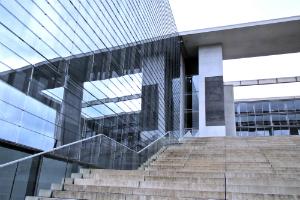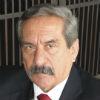 The optimization of the operations of a building has developed the term "building science", which seeks to integrate all knowledge, both technological and architectural, for the benefit of the efficiency of a construction.
by Camilo Botero*
The optimization of the operations of a building has developed the term "building science", which seeks to integrate all knowledge, both technological and architectural, for the benefit of the efficiency of a construction.
by Camilo Botero*
In recent years I have brought to this column, topics such as energy efficiency, LEED, commissioning, energy audits, zero energy balance, smart grids, climate change and my favorite topic: the virtuous circle: Training + Standardization + Certification.
As buildings in general are large consumers of energy (electricity and hydrocarbons, mainly), the percentages of their participation in these consumptions vary visibly from country to country, by development, by climate and by culture of URE (Rational Use of Energy), therefore I will not give a figure of this%, as I have placed in previous articles, perhaps at the risk of being imprecise and even wrong, but what is obvious is that we must give priority to energy consumption in buildings and we have a social and economic obligation to do so.
I have recently attended several congresses and conferences where emphasis is placed on all the topics described in the first paragraph of this article and recently the concept "building science" is appearing, due to the complexity that O&M (operate and maintain) represents in buildings from the point of view of the rational use of their energy, its impact on the environment and its sustainability in its life cycle.
I attach the definition that appears in Wikipedia on the subject, but making a free translation of the first paragraph the "science of buildings" would be:
The collection of scientific knowledge that focuses on the analysis and control of physical phenomena that affect buildings. Traditionally it includes the analysis of the materials of the building, and the systems of the envelope of the same. In Europe, building physics is a term used for the domain of knowledge that overlaps strongly with "building science" and includes fire protection, noise control overhead lighting, as well as the approach to heat and humidity that tend to dominate the subject in North America, referring to "building science". The practical purpose of this science is to provide predictive capacity to optimize the performance of buildings and understand and prevent failures.
It is the discipline of combined architectural-engineering construction technology that has to do with the "main design details" as a response to naturally occurring physical phenomena such as the following:
- Climate.
- Terrain conditions.
- Characteristics of the materials.
- Physical, chemical and biological characteristics.
- Human physiology.
- Use of energy and its O&M control".
In general, construction projects are carried out in a dispersed and superficially linked way, therefore, serious problems often occur in the design, supply, assembly and O&M. Nor are they perfectly defined or not made known to all those involved, the OPR (Owner Project Requirements) that is, all the requirements clearly defined by the owner so that the building works optimally throughout its life cycle.
In addition, it is rarely fulfilled in an organized, informed and documented way, at least in what I know in detail, what are the air conditioning systems, the fundamental steps of the project that describes and proactively leads the commissioning.
- OPR.
- Pre-design.
- Design.
- Construction.
- O&M.
And all this throughout the useful life of the building and not only in each phase separately or while the design, assembly and start of the building lasts.
Therefore, I dare to call on the engineering and architectural community that is involved in the construction of buildings to encourage the study of the "science of buildings". Of course, the universities, technological institutes and guilds of the country are welcome to contribute their ideas with the purpose that we will soon have: "Masters in building science".
 *Camilo Botero is the current Secretary of the Federation of Ibero-American Associations of Air Conditioning and Refrigeration - FAIAR; he was president of ACAIRE and is president of Camilo Botero Ingenieros Consultores Ltda. He has worked as a teacher in several Colombian universities, guilds and currently in ACAIRE in diploma courses of air conditioning projects, energy efficiency in air conditioning and refrigeration, cogeneration and trigeneration, applied psychometrics, thermodynamics, fluid mechanics, heat transfer and turbomachinery.
*Camilo Botero is the current Secretary of the Federation of Ibero-American Associations of Air Conditioning and Refrigeration - FAIAR; he was president of ACAIRE and is president of Camilo Botero Ingenieros Consultores Ltda. He has worked as a teacher in several Colombian universities, guilds and currently in ACAIRE in diploma courses of air conditioning projects, energy efficiency in air conditioning and refrigeration, cogeneration and trigeneration, applied psychometrics, thermodynamics, fluid mechanics, heat transfer and turbomachinery.













